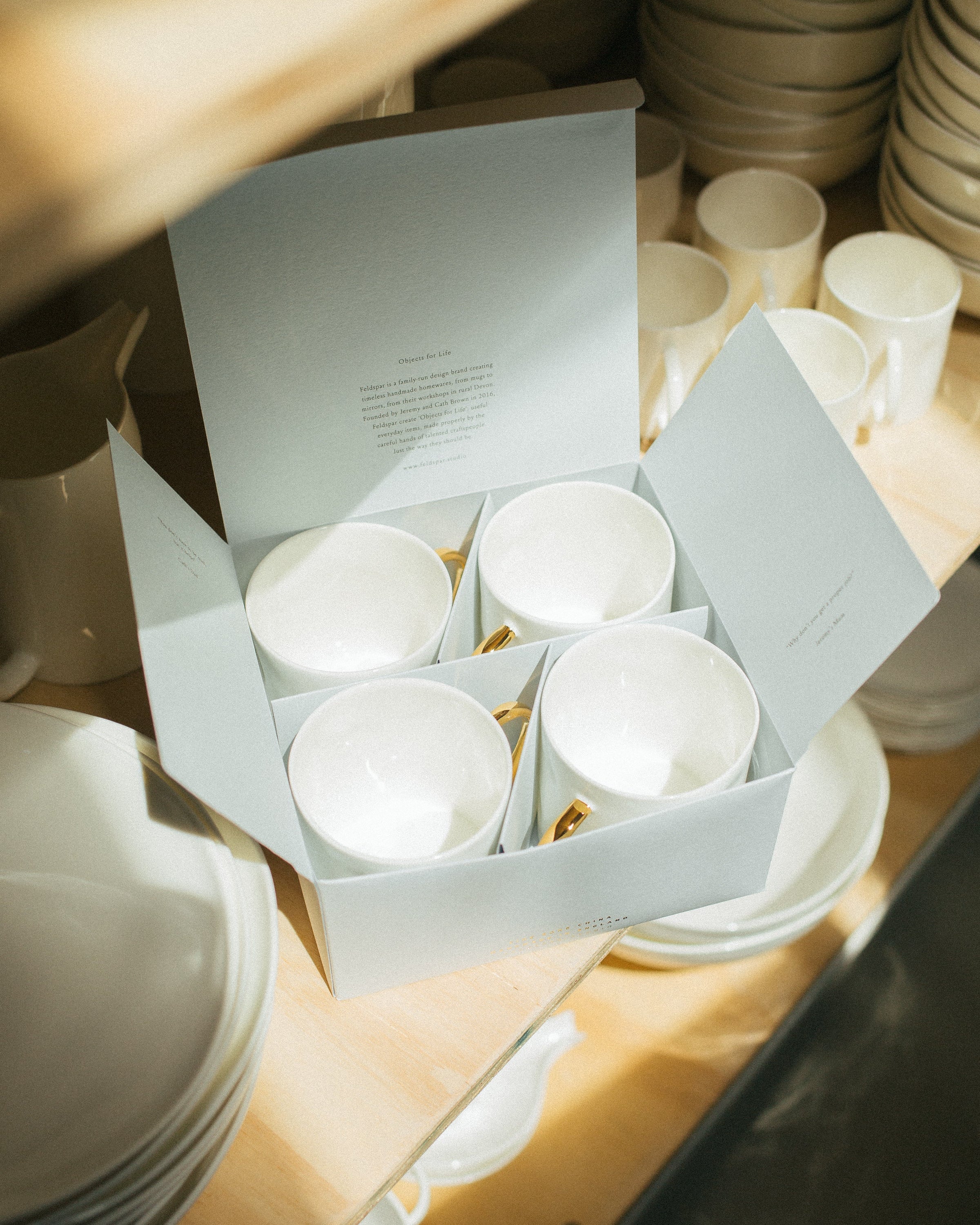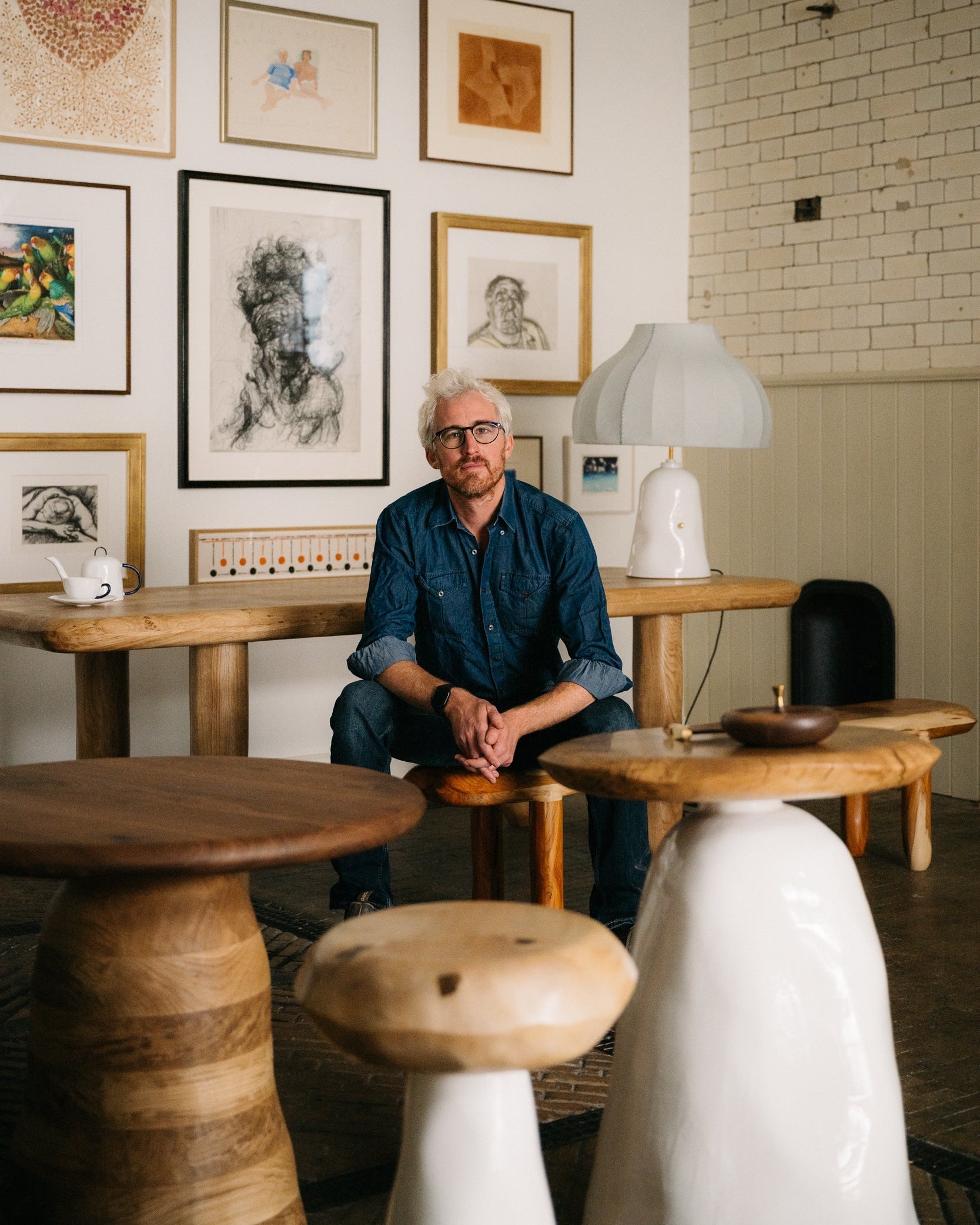
Seconds: what makes something a second and why?
Here at Feldspar we champion the handmade - no two of our wares are ever quite identical, and this is the point - the little variations that come with time honoured processes are the parts we especially embrace, the marks of the maker. Everything we make has passed through many pairs of careful hands on its journey from liquid clay to a useable fine bone china vessel.
But making fine bone china is a tricky business. Making minimally decorated, bright white fine bone china on a working farm is, perhaps, even trickier. Occasionally things just don’t go quite to plan, be it large unsightly specks in the clay body that come out only after a firing or a drip of colour that’s not where it’s supposed to be - and these pieces are put to one side as ‘seconds’. We hold an annual seconds sale every March, a Spring clean of sorts. These are perfectly useable objects, they just don’t quite conform to the stringent quality standards that both we and our customers would expect from our wares.
There are several things that will deem an item a ‘second’. It could happen at any point during the making of the wares, but generally if it is earlier on then we’re able to fix things, or if not then that item won’t make it all the way to the decorating stage - which is the third and final kiln firing that everything passes through. And as with trying to form anything from a natural material, there are always overlaps and nuances within our quality control categories - we love things to be slightly misshapen, for example, it’s part of our aesthetic - but there is a limit.
Here is an insight into what makes a second and why, and what to expect if you're thinking of buying one in our Seconds Sales.
CASTING
During the initial casting stage the slip - or liquid clay - is poured into moulds, and then seams and sharp edges are sponged and fettled away. This is all done by hand, and various quality issues can crop up here - a too-sharp edge or a nubbin (official term) of clay accidentally left within a vessel. Occasionally the drips of the slip can be seen, these are called slip trails and generally we really like to see these as they show so much of the making process - slip casting as a method of forming plates is now incredibly rare, with most plates being made now on machines. However, if the trails are either too deep or make the surface of the plate too uneven these will be considered a second.

FIRING
Everything we make goes through three firings on its journey to becoming a finished piece, and as with anything when you apply gigantic amounts of heat to it, sometimes this can go awry. When first fired fine bone china shrinks by 15%, and so at this first firing things can warp and twist, sometimes this is an ok amount, sometimes not. Firing issues account for only a few of our seconds - most things can be fixed at this stage. Some of the issues that can’t are when items get stuck to the kiln shelves and end up with little chips in the base, known in the business as ‘plucking’, or when crumbs from the aforementioned shelves will fall onto the ware during the firing causing fired-on debris sprinkles, that can leave marks when removed.

GLAZING
We dip glaze all of our items by hand, and this means that occasionally there are variations in the glazed surface - sometimes a little drip of glaze will be visible, sometimes a spot where a finger held it can be seen. Occasionally some glaze will be missing off a portion of a surface, sometimes in the form of small ‘scratches’ on the surface - a result of the glaze crawling in the kiln - as fine bone china is vitrified at the first firing unlike other types of ceramics, it is not absorbent at all and so is fine to use but if these cover a large area these items are considered seconds.

DECORATING
Perhaps the most obvious - and the most common - reason for items to be seconds are decorating mishaps: a cobalt drip perhaps, or some specks of colour where they’re not supposed to be, a squashed and illegible logo underneath or just patchy coverage. There are many reasons why something will fall at the final QC hurdle, but these are just aesthetic issues - the items are always perfectly useable, they just might look a little unexpected.













